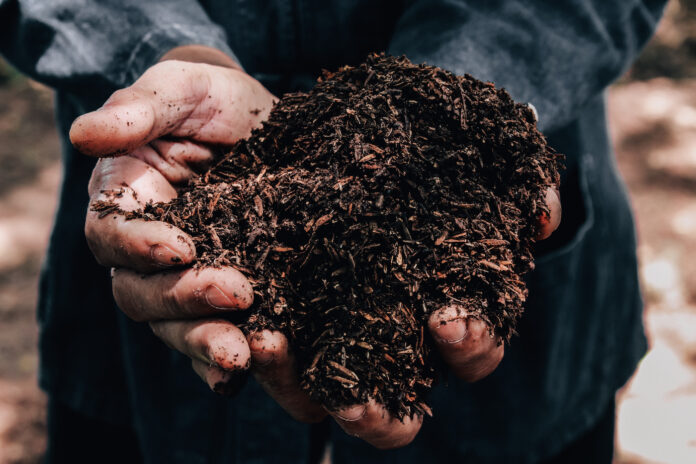The global supply chain was massively disturbed when the pandemic hit at the start of 2020, and the sanctions that have been imposed following Russia’s invasion of Ukraine this year are impacting the cannabis industry down to its roots.
As the cost of fertilizer continues to skyrocket with no end in sight, cultivators, brands, and dispensaries can either feel the financial pain or seek innovative solutions to protect their margins.
The Industry Scrambles to Adjust as Fertilizer Prices Continue to Skyrocket
Every supply chain has its starting point, and for cannabis products in all categories, everything begins at the cultivation facility. Whether your products or inputs are grown indoors, outdoors, or through some type of hybrid alternative, fertilizer is still an essential component in growing high-quality cannabis on a commercial scale — and it’s in short supply.
“Fertilizer boosts flower production, increases yield, and helps protect the plant from disease,” said Alen Nguyen, CEO and co-founder of the procurement platform MainStem. “The big three primary nutrients that cannabis plants need in large quantities are NPK, short for nitrogen, phosphorus, and potassium. NPK is the building block of any cannabis fertilizer with important secondary nutrients including sulfur, calcium, and magnesium.”
As cultivators are already aware, the industry is wholly dependent on regular access to large quantities of NPK to help fight against nutrient deficiencies and develop healthy plants. Unfortunately, the world’s leading supplier and many of its industry leaders are mired in sanctions imposed by the United States, Canada, the European Union, and other European countries.
Russia is the largest global exporter of fertilizer and soil nutrients, but even companies that haven’t been dealing with Russian exports are still feeling the impact of their supply chain interruptions as customers across the larger agriculture industry explore new suppliers.
“In the U.S. alone, fertilizer costs are expected to jump 12 percent this year, after rising 17 percent in 2021, according to American Farm Bureau Federation and U.S. Department of Agriculture (USDA) data,” Nguyen said. “Russia exports roughly 50 million tons of NPK fertilizer, about 13 percent of the global supply. Traditional agriculture is the largest consumer of this type of fertilizer: fruits, vegetables, etc. And although cannabis is growing, it’s still a tiny subsect of this much larger industry. So what’s happening is the rest of agriculture is gobbling up the resources from areas outside of Russia, and cannabis is left with the short end of the stick.”
Although cannabis was considered an “essential business” in the midst of the pandemic, it’s arguably less essential than food. As a result, it’s forced to take the backseat during this global crisis, forcing operators to be more creative and organized to compete with the major agricultural firms that are taking over nutrient sources regularly reserved for cannabis.
How Can Cultivators Pivot and Survive the Shortage?
Challenges have always spurred innovation, and while the fertilizer shortage is taking a massive toll on current cannabis production, it may have an overall positive effect on how quickly and efficiently the industry’s supply chain moves.
“I think we’re going to see a shift in buying behavior as companies are forced to be more proactive about their procurement and move away from purchasing in small quantities to a more strategic forecasting and planning mindset,” Nguyen said.
“Having a more mature approach to procurement will help mitigate disruption and enable growers to secure the products they need to produce. Cannabis has been a little slow to embrace these practices compared to other industries, but as the increasing pressure on supply chain logistics mounts, we are seeing operators begin to change their buying strategy.”
But what does a new buying strategy for cannabis operators look like?
Experts in the procurement space are seeing more brands and companies pivot to digitization, adopting buying practices that are more streamlined and organized than what was established by and necessary for the covert legacy market.
“This industry is based on relationships, and it’s been that way forever. When you have a single supplier providing you with nutrients, supplies, products, and more, it’s fantastic until something like this happens,” Nguyen said. “The current situation is encouraging the industry to broaden its horizons, look for alternative sources, and gain visibility. It’s also forcing operators to think more deeply about their business plans, and what processes need to be put in place to anticipate these sorts of disruptions.”
Nguyen believes there will also be a shift in how cultivation itself is handled, and many cannabis growers may begin adopting some of the techniques traditional agriculture has been utilizing for years.
“This is the perfect catalyst for that shift,” Nguyen said. “If the industry is smart, they’ll try to piggyback off what traditional agriculture is doing right now, and how they’re handling the shortage. The good news is that fertilizer will ramp up over time, but in the meantime, we’re going to see a lot of exciting and creative innovation that might have lasting power.”
Beyond the obvious of buying in bulk, operators can stay ahead of the supply chain struggle by using AI-powered tools to analyze plant growth and identify the exact amount of fertilizer needed, or exploring alternatives such as bacteria-produced fertilizers that are often less expensive and easier to obtain than traditional sources.










[…] cost of biological predators varies greatly due to shipping and supply limitations. Generally, it costs between $50 and $100 for enough insects to cover about 1,000 square feet of […]